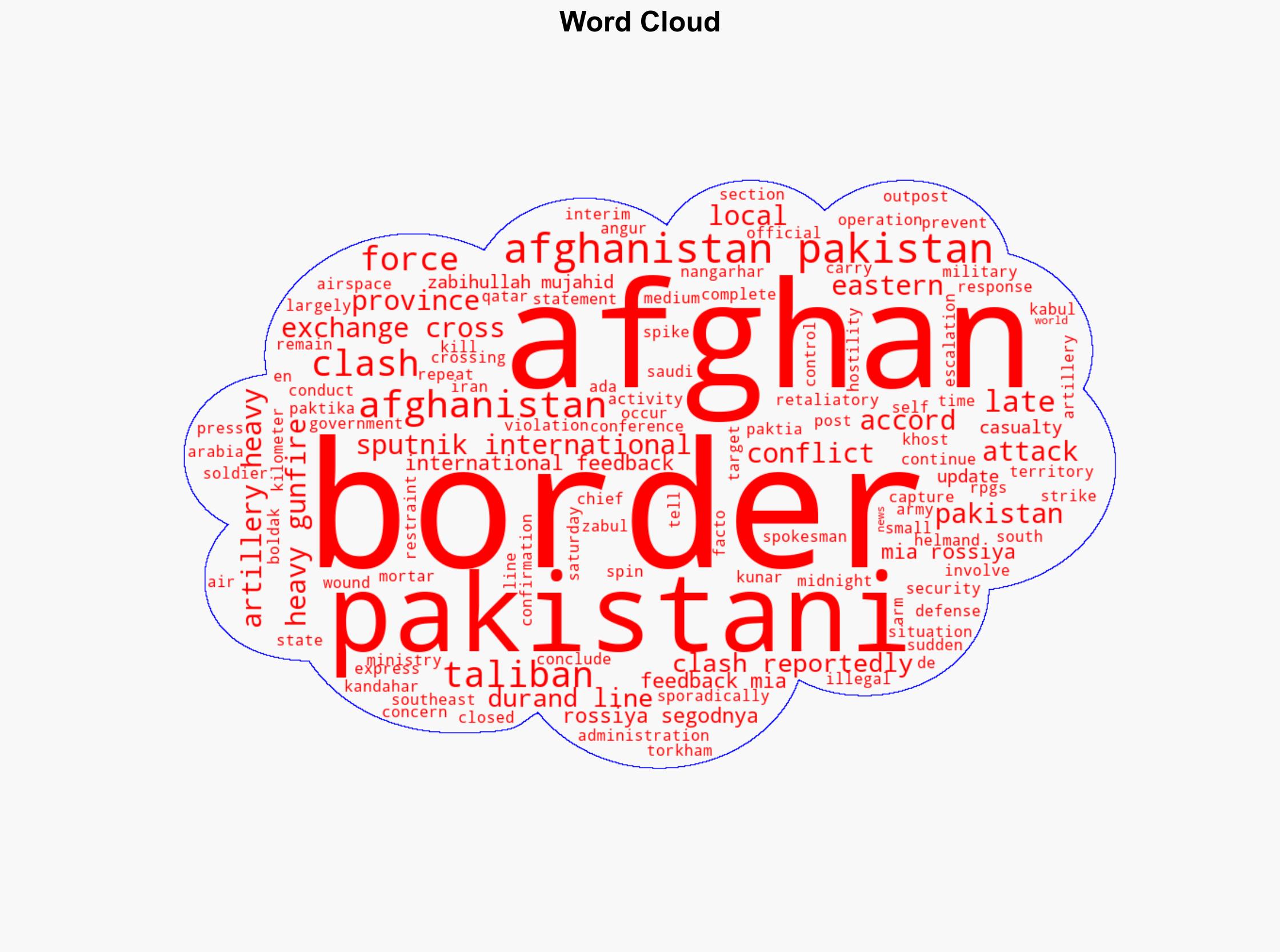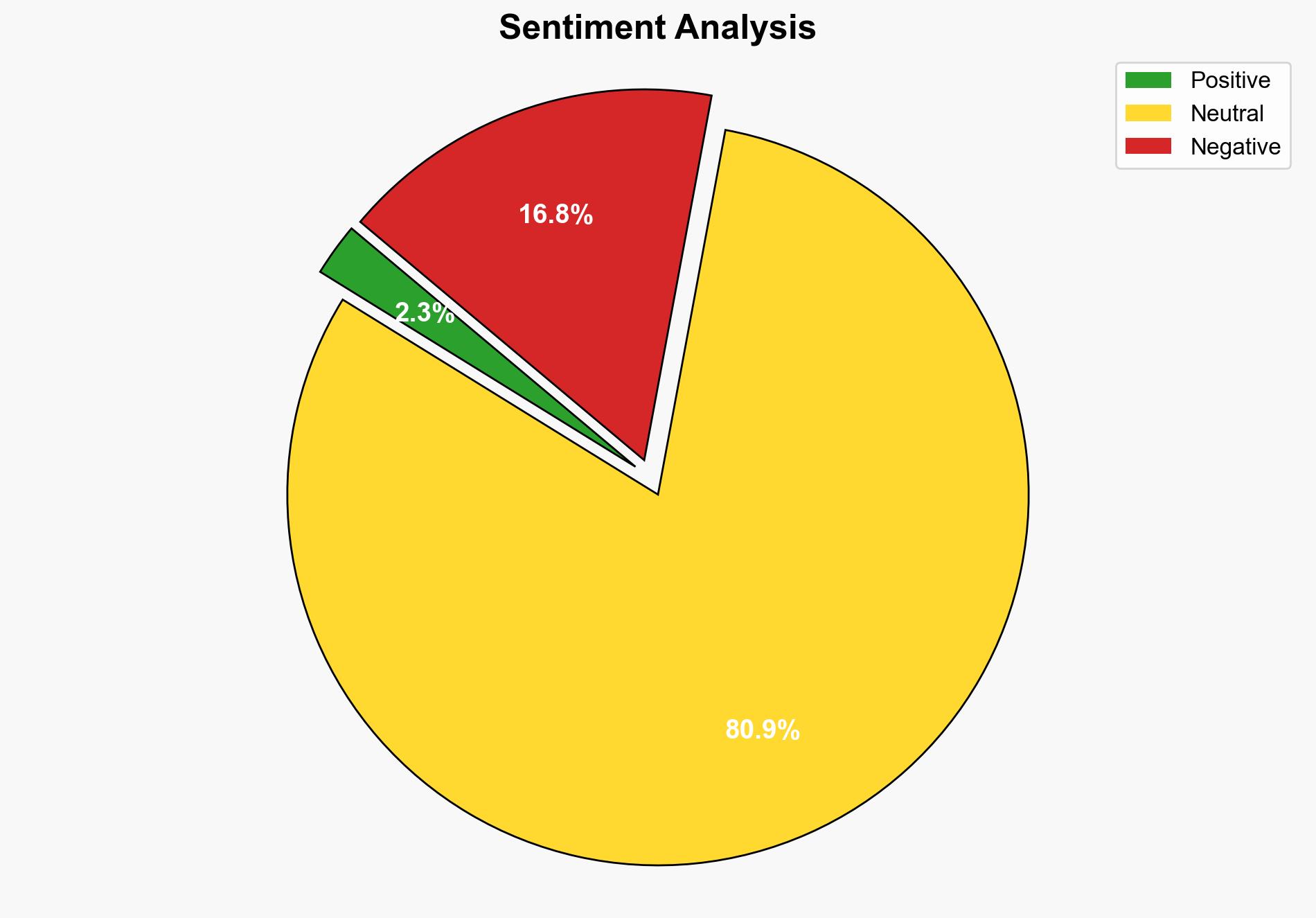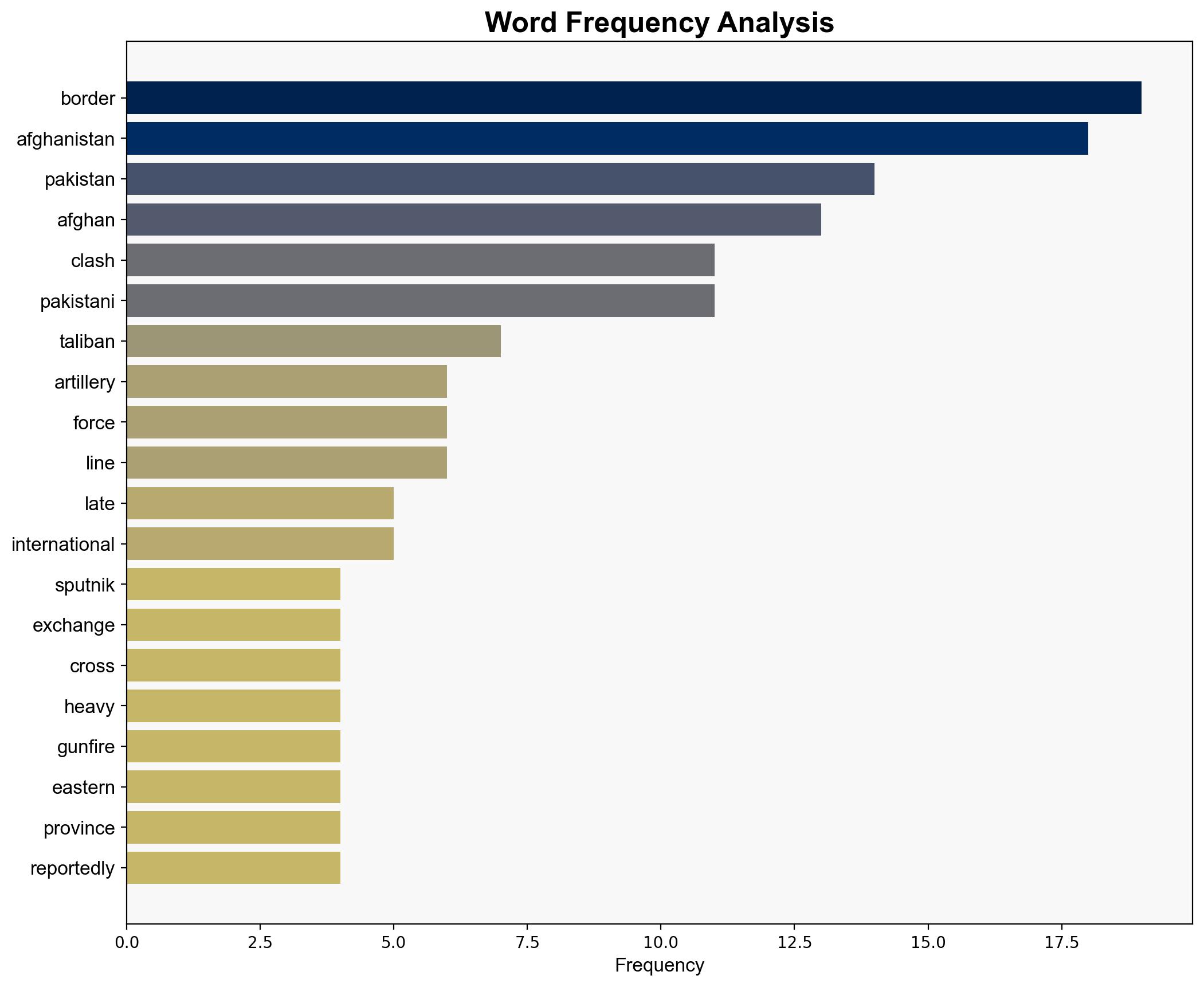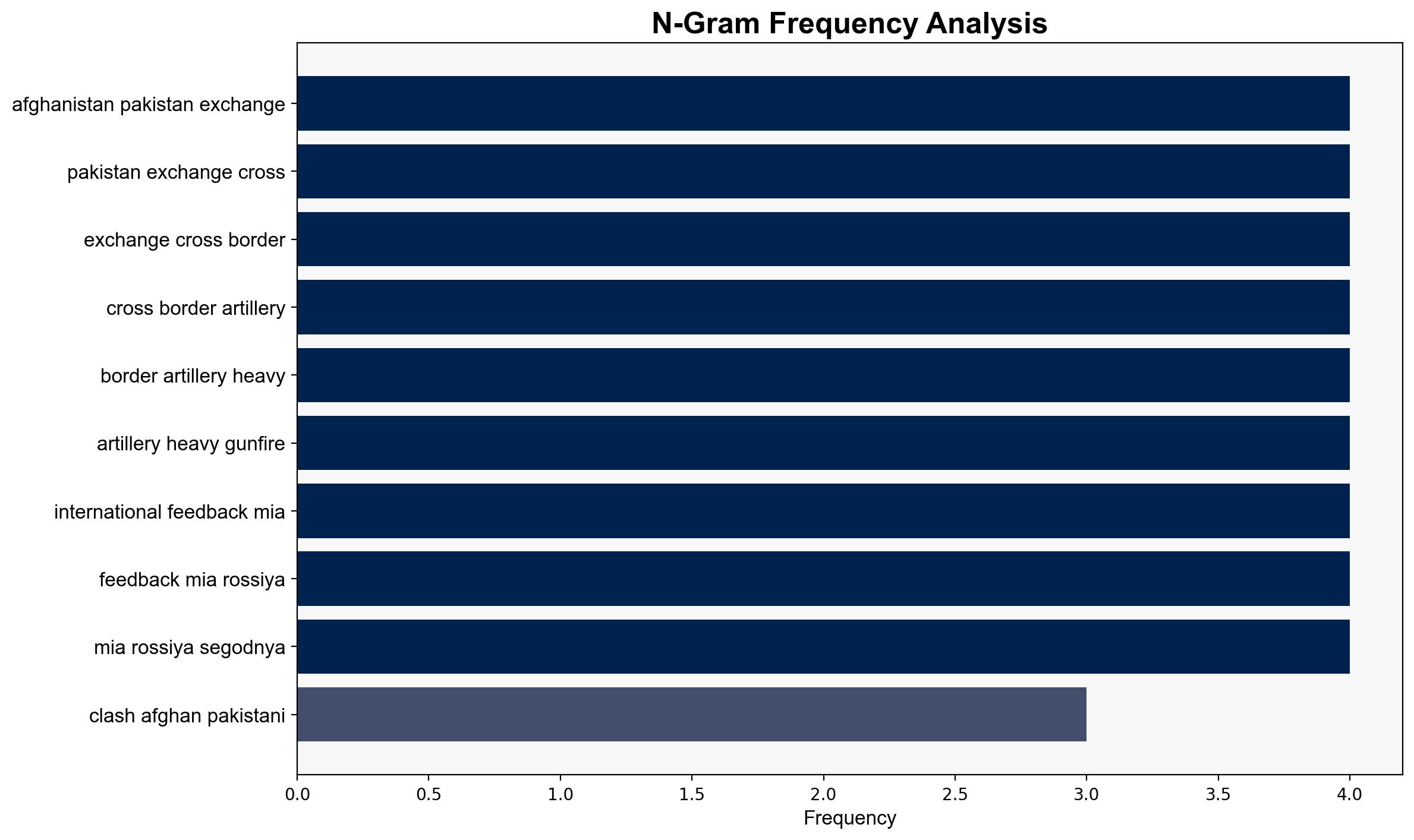Clashes on Afghan-Pakistani Border Latest Updates – Sputnikglobe.com
Published on: 2025-10-12
Intelligence Report: Clashes on Afghan-Pakistani Border Latest Updates – Sputnikglobe.com
1. BLUF (Bottom Line Up Front)
The most supported hypothesis is that the clashes are a result of retaliatory actions by Afghan forces against perceived Pakistani violations of Afghan airspace. Confidence level: Moderate. It is recommended to engage in diplomatic dialogues to de-escalate tensions and establish a monitoring mechanism to prevent further violations.
2. Competing Hypotheses
1. **Hypothesis A**: The clashes are primarily driven by Afghan retaliatory operations in response to repeated Pakistani airspace violations and airstrikes on Afghan territory.
2. **Hypothesis B**: The clashes are a result of internal Taliban dynamics, where certain factions are using border tensions to consolidate power and influence within Afghanistan.
Using the Analysis of Competing Hypotheses (ACH) 2.0, Hypothesis A is better supported by the reported retaliatory operations and the Afghan defense ministry’s statements. Hypothesis B lacks direct evidence but remains plausible given the complex internal dynamics within the Taliban.
3. Key Assumptions and Red Flags
– **Assumptions**: It is assumed that the reported airspace violations by Pakistan are accurate and that Afghan forces are unified in their response.
– **Red Flags**: The lack of confirmation on Pakistani casualties and the absence of independent verification of airspace violations raise concerns about the accuracy of the reports.
– **Blind Spots**: Potential internal Taliban motivations and the role of external actors like Iran, Saudi Arabia, and Qatar in influencing the situation are not fully explored.
4. Implications and Strategic Risks
The ongoing clashes could escalate into a broader conflict, destabilizing the region and impacting international relations. Economic disruptions could arise from closed border crossings, affecting trade. Geopolitically, increased tensions might draw in neighboring countries, complicating diplomatic efforts. There is also a risk of cyber operations targeting both countries’ critical infrastructure.
5. Recommendations and Outlook
- Initiate diplomatic talks between Afghanistan and Pakistan to address airspace violations and establish a joint monitoring mechanism.
- Encourage regional stakeholders, including Iran, Saudi Arabia, and Qatar, to mediate and facilitate dialogue.
- Scenario Projections:
- Best Case: Successful diplomatic intervention leads to a ceasefire and reopening of border crossings.
- Worst Case: Escalation into a full-scale conflict involving regional powers.
- Most Likely: Continued sporadic clashes with intermittent diplomatic engagements.
6. Key Individuals and Entities
– Zabihullah Mujahid: Taliban government chief spokesman.
– Afghan Defense Ministry: Responsible for statements on retaliatory operations.
7. Thematic Tags
national security threats, cybersecurity, counter-terrorism, regional focus





